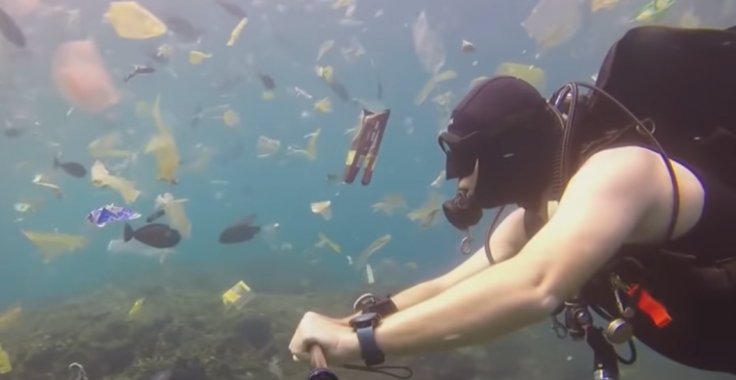
Over the years, many marine experts and animal activist groups came forward to make people aware of ocean pollution, caused by plastic materials. Even the world read stories such as dead whale found with tons of plastic inside the stomach, but it looks like humans hardly care because, in a recently published research paper, experts stated that the animals, living in the deepest part of the ocean, have been found with plastic fragments inside their body.
Every year, more than 300 million tons of plastics are produced. Among them, almost five million tonnes of plastics are found floating on the oceans.
Since the deep sea exploration is expensive and time-consuming, earlier most of the studies related to ocean plastic pollution was conducted considering the plastic on the surface. But in this new study, a team of British researchers claimed that they have found the cases of plastic ingestion among tiny shrimp in six of the world's deepest ocean trenches.
The researchers said that after conducting the study on 100 percent of the marine animals in the Marina Trench east of the Philippines, they found plastic fibres in their digestive system. Alan Jamieson, from Newcastle University's School of Natural and Environmental Sciences, said that even though he was expecting to find something but the finding was huge.
Jamieson and his team have spent years to find dozens of new species, living between 6000 and 11000 meters beneath the ocean surface. But this time, they decided to look for plastic and the lead of the study Jamieson told AFP that "We are sitting on the deepest dataset in the world, so if we find (plastics) in these, we are done."
The recent study, published in in the journal Royal Society Open Science, has revealed that the Peru-Chile Trench in the Southeast Pacific, which is almost 15000 kilometres from the Japan Trench, also showed evidence of plastic pollution.
"It's off Japan, off New Zealand, off Peru, and each trench is phenomenally deep," Jamieson said adding that "The salient point is that they are consistently found in animals all around the Pacific at extraordinary depths so let's not waste time. It's everywhere."
The study report showed that out of 90 marine creatures, the group of researchers dissected 65, and found at least one plastic micro-particles inside their body.
Earlier, it was not clear whether the marine creatures consumed the particles at the higher depths and then died. But the team studied the fibres, most of them were nylon and found that the materials were several years old.
It should be noted that micro-plastic particles which were dumped in the ocean start gathering bacteria first and then they become heavier, which is the reason behind their drowning.
Jamieson added that "So even if not a single fibre were to enter the sea from this point forward, everything that's in the sea now is going to eventually sink, and once it's in the deep sea where the mechanism to get it back is?"
Plastic pollution has become so huge that it has become one of the main reasons behind the death of marine animals like whales.
"These particles could just pass straight through the animal, but in the animals, we looked at they must be blocking them. The equivalent would be for you to swallow a 2-metre polypropylene rope and expect that not to have an adverse effect on your health. There's no good aspect to this," Jamieson added.
Prior to this research, a group of Chinese researchers also found tiny plastic particles in the deepest areas of the oceans and their findings revealed that the major cause of this pollution microplastics that includes plastic beads, fibre and fragments that are less than point two inches.









